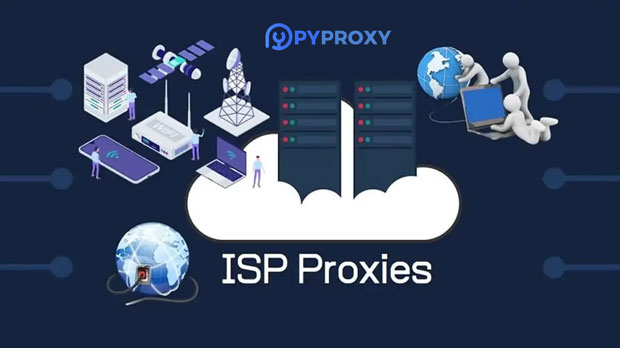In the rapidly evolving world of digital advertising, the importance of ad verification has grown substantially. Ad verification refers to the process of ensuring that ads appear correctly, in the right context, and are viewable by the intended audience without fraud or misuse. ISP Proxy servers play a crucial role in this process. These servers act as intermediaries between the client (advertiser) and the content being served, allowing for the monitoring and validation of advertisements in a secure and controlled environment. By using ISP proxy servers, advertisers and agencies can perform accurate ad verification across various regions, devices, and platforms, ensuring that ads are displayed in compliance with specific standards. This article will explore the critical role ISP proxy servers play in ad verification, their benefits, and how they help to mitigate issues like ad fraud, placement errors, and non-viewability. The Role of ISP Proxy Servers in Ad VerificationAd verification is a critical step for ensuring the quality, safety, and effectiveness of digital advertising campaigns. With the rise of online advertising, advertisers must ensure that their ads are displayed to the right audience in the correct format, on trusted platforms, and without encountering fraudulent activities or placement errors. ISP (Internet Service Provider) proxy servers act as a bridge between the advertiser and the end user, enabling the verification process to occur under various conditions, including regional variations and platform discrepancies.An ISP proxy server essentially acts as a gateway to the internet, routing traffic from the user to the destination website, while masking the user's true IP address. This allows ad verification tools to monitor ads from different geographical locations and platforms, simulating real-world conditions, without compromising user anonymity. The ISP proxy server helps to ensure that ads are accurately presented and viewed, preventing scenarios where ads are misdirected or shown in irrelevant contexts.How ISP Proxy Servers Facilitate Global Ad VerificationOne of the key benefits of using ISP proxy servers in ad verification is the ability to validate ads in different geographical locations. Advertisers often target specific regions or countries with tailored ads, but geographic restrictions, local content regulations, and other factors can affect the visibility and relevance of an advertisement.ISP proxy servers enable advertisers to verify their ads from multiple locations without the need for physical presence. By connecting to proxies in various regions, ad verification tools can simulate traffic from different countries and monitor how ads are being displayed to audiences across the globe. This process is crucial for international campaigns, where region-specific standards and compliance regulations must be met, and for ensuring that ads are shown to the right audience at the right time.Ensuring Compliance with Local RegulationsLocal content regulations and industry-specific advertising standards vary widely across different countries. For example, some regions have strict rules on the types of ads that can be shown, while others have regulations about the timing and placement of certain content. By using ISP proxy servers, advertisers can validate that their ads meet the requirements set forth by the local authorities, ensuring that they do not violate any laws or guidelines.In some countries, there may be restrictions on the type of products that can be advertised, such as alcohol, tobacco, or financial products. ISP proxy servers allow advertisers to verify that these ads are only shown in regions where they are legally permissible. Furthermore, these servers can help ensure that the ads are placed in the correct context, such as not promoting age-restricted products to underage audiences or avoiding sensitive topics in inappropriate environments.Combating Ad Fraud and Non-ViewabilityAd fraud is a major concern in the digital advertising ecosystem, with fraudulent activities like click fraud, ad stacking, and impression fraud costing advertisers billions each year. ISP proxy servers can help mitigate such issues by providing a secure and controlled environment for ad verification. Through the use of proxy servers, advertisers can track where their ads are being displayed, monitor the legitimacy of the ad placements, and verify the authenticity of the impressions.For example, a fraudulent ad placement might involve ads being shown on low-quality websites or in hidden locations, where users cannot actually view them. By using ISP proxies, ad verification tools can track whether ads are placed in viewable areas and on trusted websites. This helps advertisers identify and report fraudulent activities that may lead to wasted advertising spend and diminished campaign effectiveness.Non-viewability is another significant issue for advertisers, where ads are served but not seen by the intended audience. Through ISP proxy servers, ad verification can confirm whether the ad was displayed above the fold (visible area of the screen) and was accessible to the user. This ensures that ad spend is used effectively, and that ads are truly being seen by the targeted audience.Improving User Experience and TrustA significant aspect of ad verification is enhancing the user experience by ensuring that ads are relevant, timely, and non-intrusive. ISP proxy servers contribute to improving the overall ad experience by allowing advertisers to test and optimize their ads before launching them on a large scale. By using proxies to simulate different user environments, advertisers can better understand how their ads perform in terms of speed, relevance, and engagement.Moreover, when ads are verified and placed correctly, users are more likely to trust the advertising platform, knowing that they are not being bombarded with irrelevant or misleading content. This, in turn, can lead to higher engagement rates, better customer retention, and a more positive perception of the brand.The Future of ISP Proxy Servers in Ad VerificationAs the digital advertising landscape continues to evolve, the role of ISP proxy servers in ad verification will only grow in importance. With the increasing complexity of ad tech, cross-platform campaigns, and more sophisticated fraud tactics, the need for accurate, real-time verification will become even more critical.Future advancements in ISP proxy technology will likely include the integration of machine learning and artificial intelligence to enhance ad verification processes. These tools will be able to automatically detect patterns of fraud, identify placement errors, and optimize ad targeting in real time. Additionally, as more regions implement stricter advertising regulations, ISP proxy servers will continue to play a key role in ensuring compliance and preventing legal issues.In conclusion, ISP proxy servers offer significant advantages in the ad verification process by ensuring that ads are accurately displayed to the right audience, in the right format, and in compliance with local regulations. They help advertisers combat ad fraud, ensure viewability, and optimize the user experience, all of which are crucial for the success of digital advertising campaigns. As the digital advertising ecosystem grows more complex, ISP proxy servers will remain a critical tool in ensuring the integrity, effectiveness, and compliance of ad campaigns across the globe.
Apr 09, 2025
![arrow]()



























































